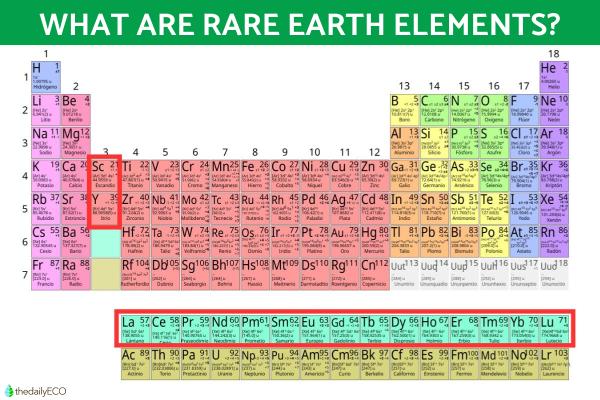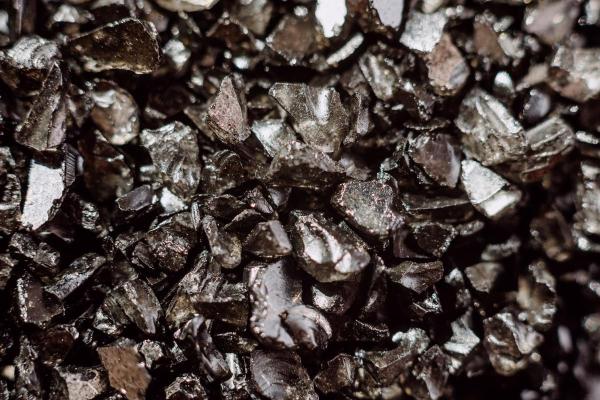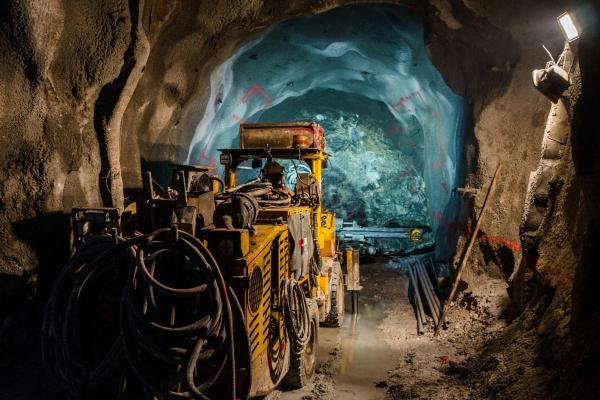
Rare earth metals are a group of 17 chemical elements on the periodic table. They have certain magnetic, electrical and optical properties that make them essential in various industries. Used in the manufacture of electronic devices, renewable energy, military equipment and industrial processes, they are indispensable to the current functioning of societies across the world. Despite their name, they are not scarce. Their extraction and processing do present technical and environmental challenges. Understand the characteristics and importance of rare earth metals with our argument asking what are the rare earth elements?
What are the rare earth elements?
Rare earth elements or metals are a group of 17 chemical elements found on the periodic table that have unique properties, especially in relation to electrical conductivity and magnetism. Despite their name, they are not necessarily rare, but they are difficult to extract in usable concentrations. They are essential in the manufacture of modern technological devices, from mobile phones and batteries to wind turbines and military equipment.
Their importance lies in the fact that they possess characteristics that cannot be easily replaced by other materials, making them strategic for industry and technology. Their extraction and processing raise grave environmental concerns, since they are usually mixed with other minerals and require polluting processes for their separation.
The most important and widely used of the 17 rare earth metals are:
- Neodymium (Nd): used in high-power magnets for wind turbines, electric motors and hard drives.
- Europium (Eu): this is key in LED and fluorescent displays as it helps produce bright colors.
- Terbium (Tb): used in television screens and low-consumption lamps.
- Lanthanum (La): essential in the manufacture of camera lenses and rechargeable batteries.
- Dysprosium (Dy): used in high temperature resistant magnets, making it essential for electric cars.
The remaining rare earth elements are:
- Praseodymium (Pr)
- Samarium (Sm)
- Gadolinium (Gd)
- Holmium (Ho)
- Erbium (Er)
- Thulium (Tm)
- Ytterbium (Yb)
- Lutetium (Lu)
- Scandium (Sc)
- Yttrium (Y)
To learn more basics about earth metals and the other elements on the periodic table, check out our article explaining the difference between atoms and molecules.

Characteristics of rare earth elements
Rare earth elements have unique chemical and physical properties that make them indispensable in multiple technological applications. The most significant characteristics of rare earth elements are:
- Exceptional magnetic properties: some rare earth elements, such as neodymium and dysprosium, have a high capacity to generate powerful magnetic fields. This makes them ideal for making high-performance magnets used in electric motors, wind turbines and data storage devices. In addition to electromagnetic energy, learn about the different types of energy we find in nature.
- High electrical and thermal conductivity: several elements in this group, such as lanthanum and cerium, have a good ability to conduct electricity and heat. This makes them key materials in the manufacture of electronic components and industrial catalysts.
- Luminescent properties: elements such as europium and terbium have the ability to emit light in different colors when excited by ultraviolet or electrical radiation. Thanks to this property, they are used in LED screens, televisions and fluorescent lamps.
- Moderate chemical reactivity: rare earths are relatively reactive and are usually found in nature combined with other elements in minerals. They are not found in pure form and require refining processes for their extraction.
- Difficulty in extraction and processing: although they are not particularly scarce in the Earth's crust, obtaining them is complex because they are dispersed and mixed with other minerals. Their separation also requires intensive chemical methods that can generate high levels of environmental degradation and pollution.
What are rare earth elements used for?
Rare earth metals have a wide variety of applications in technology, industry and science. Thanks to their unique properties, they are essential in the development of advanced electronic devices, renewable energy and military equipment. Some of the most important uses of rare earth elements are:
- Electronics and technological devices: rare earth elements are essential in the manufacture of mobile phones, computers, televisions, tablets and other electronic devices.
- Renewable energy and electric mobility: neodymium and dysprosium magnets are essential in electric vehicle motors and wind turbines, as they enable the efficient conversion of mechanical energy into electricity.
- Aerospace and defense: rare earths are strategic materials in the manufacture of radars, communication systems, advanced weapons and alloys used in aircraft and submarines.
- Medicine and health: some rare earth elements, such as gadolinium, are used in magnetic resonance imaging (MRI) equipment to improve the quality of medical images.
- Catalysts and industrial processes: cerium and lanthanum are used in petroleum refining and the manufacture of specialty glasses. Yttrium and praseodymium improve the strength of ceramics and metal alloys.
Many of the rare earth metals require various chemical reactions to activate their uses. We discover the difference between organic and inorganic compounds which is fundamental in understanding chemical reactions.

Where are rare earth elements found?
Rare earths are not found in large concentrated deposits like other organic materials, but are dispersed in very small quantities within different types of rocks and minerals. Although they are present throughout the Earth's crust, their extraction is difficult and expensive. This is due to both their low concentration and the complex refining processes they require to be useful in industry.
There are only a few countries that currently have the capacity to extract and process rare earth elements on a large scale. The main producers worldwide are:
- China (absolute leader in production): China dominates the rare earth market, accounting for more than 60% of global production and controlling most of the refining.
- United States: home to the Mountain Pass mine in California, one of the largest rare earth deposits outside of China. Although production has increased in recent years, the country still relies on China for refining and processing of these elements.
- Australia: the third largest producer of rare earths and has significant reserves in the Mount Weld deposit.
- Myanmar: has become a key player in rare earth production in recent years, with exports mainly ending up in China for refining.
- India: has considerable reserves, especially monazite off the coast of Tamil Nadu. However, production is limited due to government restrictions and technological challenges.
Discover how another important resource is extracted and refined in our article explaining how is coal made?

Where are rare earths found in the US?
As we have explained, China is not only the leader in rare earth element extraction, but its output is significantly greater than its nearest competitors. The USA does have rare earth metals and they extract them on a large scale, but they lack the infrastructure to refine them. Rare earth elements in the US can be found in the following locations:
- Mountain Pass (California): the largest extraction site of rare earth metals in the US and was once a major supplier before China superseded it.
- Bokan Mountain (Alaska): rare earth elements have been discovered, but their extraction is limited.
- Bear Lodge (Wyoming): while deposits have been discovered, it is still in the development stage in terms of extraction.
- Round Top (Texas): potential for future mining.
Now that you know what rare earth elements are and why they are important, you may want to check out our guide explaining the difference between minerals, rocks and crystals.
If you want to read similar articles to What Are the Rare Earth Elements?, we recommend you visit our Environment (other) category.